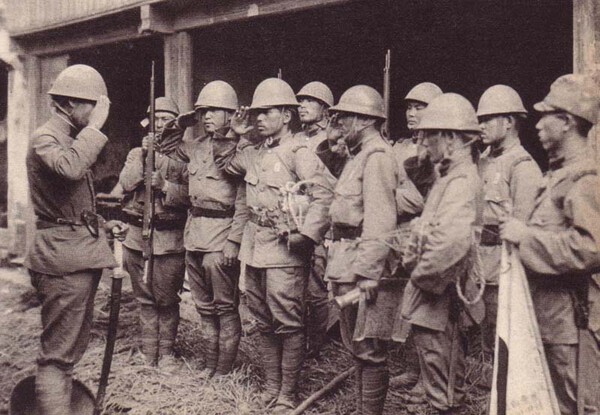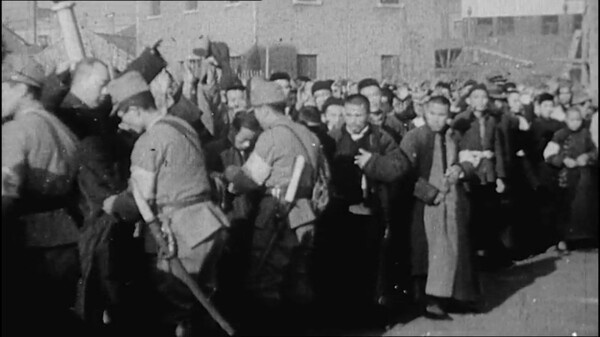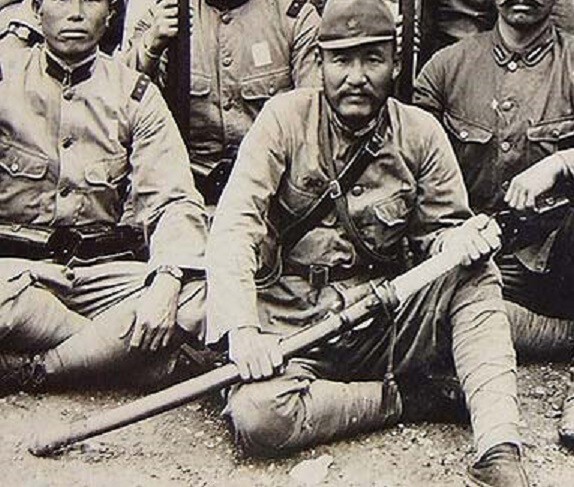-
Posts
1,690 -
Joined
-
Last visited
-
Days Won
11
Everything posted by Dave R
-
Traditionally shirisaya and koshirae are kept in bags. Shirisaya in cotton and koshirae in silk, this might help stabilise your shirisaya.
-
Do you keep your shirasaya in a bag?
-
Add another wartime blade without stamps, this arrived as a bare blade so no idea how it was originally mounted.
-
It is a bit of a quandary. Due to limited funds (champagne tastes and a ginger beer income) I buy what I can afford, which usually means "projects". I then complete the "project" with such original parts as I can get, which is one reason I collected a photo-file of original variations so as to avoid producing fantasy swords. Would it be "Purer" to leave these blades in relic condition? Traditionally mounted Nihonto are, and were during their working life, frequently remounted to reflect the taste and income of their owner and stored in shirasaya. Many swords bought from dealers, gunto and nihonto have been mixed and matched long before they reach the table. Documented Shin-Gunto are seen with very varied mounts indeed. I think an "all original and as was" sword is the most desirable, and worthy of a higher price, and there is also a place for the repaired and renovated. What is anathema is the "variation" produced with the intent to deceive, and sold as a rarity!
-
?
-
Not the first Gunto I have heard of, to originaly have had a non traditional polish. http://www.ryujinswords.com/kanetatsu2.htm
-
Worth knowing, thanks for the info'. That's something I have noticed about Gunto in general though, for a service sword made to regulations there's certainly a lot of variation.
-
And now that it is, I think the blade and many if not all of the bits are original and genuine, but did not start service life together. Not the right series of seppa for such an expensive blade, for these were never cheap when new made.
-
It reminds me of the half forged "Han Tanren" swords of the early Showa. Folded steel, but using modern steel and not folded as much as a traditional blade.
-
I will withhold comment until the auction is over.
-
Worry not, I have no intention of cutting with an eighty year old tsuka. They were having problems at the time with refurbished old swords breaking up in the hand. I am however very interested in how swords were really readied for use, the process is often far from what is imagined.
-
Hiya Malcolm, when you say figure of eight, do you mean a one end spiral down and then back,(a bit like katatamaki doubled) or a two end wind down and back (a bit like tsuname doubled) ? A photo or diagram would be very appreciated.
-
Wrapping the Tsuka has a long tradition going back to the Edo period, probably for practicality for the most part, but also a good signal to others that you meant business...... I have a few pictures like this, and sometimes the wrapping is very rough and ready. I suspect it also improves the grip in some cases, as in the middle picture the wrap is probably over the metal tsuka of an NCO sword.
-
Personal opinion,... all the parts are genuine but it is an assemblage of parts from a spares box. When it was assembled is of course another matter! I also think the blade has been "polished" post war and the Ito redone. The price as quoted is about right for one of these, being what you would normally pay for the parts without labour.
-
The old advice is, was and always will be, "buy the blade, not the signature"!
-
Then again, none of them were expected to go without maintenance for 70 years.
-
The problem here is if there is any active corrosion on the nakago, in which case it will not go on to the next generation "as is" but continue to degrade. These swords were made in the manner they are for a reason, which was to facilitate care and maintenance. Nice to see a complete package like this otherwise, and thanks for posting the pictures.
-
John To, the problem is that you are posting in the wrong area of the forum. I would suggest moving to the Military sword part of the forum, where there is more interest in Seki blades.
-

Seki Blade Queries #1: Fukuda Sukemitsu
Dave R replied to JohnTo's topic in General Nihonto Related Discussion
Non traditional covers a broad spectrum, as many posts make clear elsewhere. I would take this to the Military sword forum. -
I wonder if this is leather moulded and glued over metal fittings, to eradicate glare or sound/rattle, and protect the fittings from damage. I have seen similar done with a British WWI cavalry sword, where the large bell guard was completely covered with leather.
-
I am even wary of brass habaki on Gendaito and old blades. A lot of what look to be brass turn out to be gilded copper. In my experience copper is the most common material for habaki, often washed, foiled or plated with silver or gold. Solid silver also appears in a minority of cases, gold is known to be used as is shakudo and I have seen what looked like a tin alloy habaki on a Tanto, which I think was a "Yokohama Special". As for brass habaki, I am not sure I have actually seen one in hand other than on Chinese "reproductions, (or Mr Lohman's remounts) though I am happy to be proved wrong on that one.
-
Hmmm. You've got me thinking here, if it is aluminium it could be cast on the blade as the melting point is so low, rather than welded with rust. Is 660.3C high enough to damage the temper?
-
"German Silver" would make a lot of sense. Cheaper and harder than real silver alloys, and still a nice bit of bling. Also a nod in the direction of tradition as silver or silvered Habaki and Seppa do turn up on traditional blades.
-
Are you sure it is aluminium and not another white metal alloy? Aluminium is very difficult to solder. http://www.wikihow.com/Solder-Aluminum
-
Like most collectors I have a bits box, with enough pieces to remount the blade as a standard type 98, all original parts. However I will use new wood, same and ito where needed. Although I have enough original bits to avoid this they are sad and rotted and a blade deserves better when they are not the original pieces to the sword. So it will still be a "bitser" but a better/prettier "bitser".






